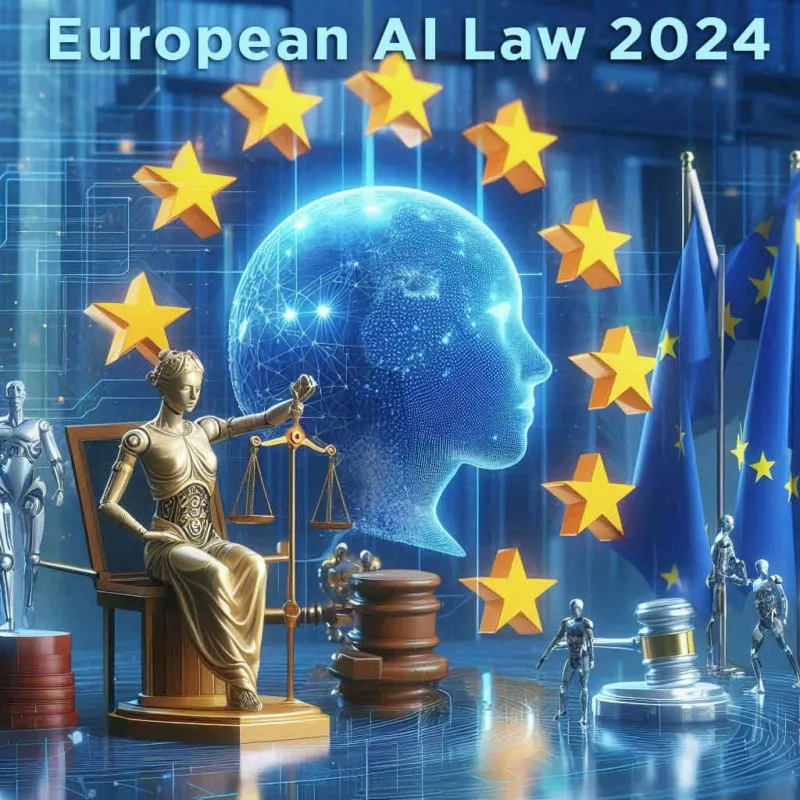European AI Law: A Comprehensive Guide to the New Regulations
The European AI Law, effective from August 1, 2024, sets a global precedent by ensuring AI technologies are trustworthy and safe. This legislation aims to protect fundamental rights while fostering innovation. Discover how it impacts various AI applications, including autonomous vehicles, facial recognition systems, and virtual assistants.
2026 Cyberculture
Individual Digital Sovereignty: Foundations, Global Tensions, and Proof by Design
2025 Cyberculture
Constitution non codifiée du Royaume-Uni | souveraineté numérique & chiffrement
2025 Cyberculture EviLink
P2P WebRTC Secure Messaging — CryptPeer Direct Communication End to End Encryption
2025 Cyberculture Cybersecurity Digital Security EviLink
CryptPeer messagerie P2P WebRTC : appels directs chiffrés de bout en bout
2025 Cyberculture
Souveraineté individuelle numérique : fondements et tensions globales
2025 Cyberculture
Audit ANSSI Louvre – Failles critiques et réponse souveraine PassCypher
Stay informed with our posts dedicated to Cyberculture to track its evolution through our regularly updated topics.
On August 1, 2024, the European Union (EU) implemented the world’s first comprehensive legislation on artificial intelligence (AI). This groundbreaking regulation ensures that AI developed and used within the EU is trustworthy, protecting citizens’ fundamental rights while promoting innovation and investment.
Objectives and Principles
The European AI Law is built on several key principles:
- Transparency and Accountability in AI Systems: AI models must adhere to transparency obligations, enabling better understanding of their operations.
- Risk Management for High-Impact AI Applications: Specific measures are in place for high-impact AI models to manage potential risks.
- Protection of Fundamental Rights in AI Applications: The law bans AI systems that pose unacceptable risks to citizens’ rights and safety.
Implementation and Oversight
Most rules will apply from August 2, 2026, but some prohibitions on high-risk AI systems will take effect earlier. EU member states have until August 2, 2025, to designate national authorities to oversee the implementation and market surveillance.
Impact on Innovation and Economy
Margrethe Vestager, Executive Vice-President for a Europe Fit for the Digital Age, emphasized that AI has the potential to transform our lives and work, promising significant benefits for citizens, society, and the European economy. The AI Law aims to create a favorable environment for innovation, supporting European startups and establishing a harmonized internal market.
Global Reactions to the European AI Law
The European AI Law has elicited varied reactions worldwide. Many countries and international organizations have praised this pioneering initiative, viewing it as a model for AI regulation.
Positive Reactions
- United States: The U.S. supports this legislation, highlighting the importance of regulating AI to protect citizens’ rights and encourage responsible innovation. The U.S. government is also working on similar regulations.
- United Kingdom: The UK plans to host a global AI summit in June 2024 to establish an international framework for AI regulation.
- China: While China has not yet adopted comprehensive AI regulations, regions like Shenzhen and Shanghai have implemented their own policies to promote and regulate the AI industry.
Challenges and Criticisms
However, the European AI Law is not without criticism. Some experts argue that this regulation could lead to regulatory outsourcing, where companies might relocate their operations to regions with less stringent regulations. This could create disparities in citizens’ rights protection and complicate effective global regulation.
Specific AI Applications Impacted by the Law
The European AI Law significantly impacts several AI applications, including autonomous vehicles, facial recognition systems, and virtual assistants.
Autonomous Vehicles
Autonomous vehicles, which use AI algorithms for real-time navigation and decision-making, will be subject to strict safety and transparency requirements. Manufacturers must provide clear information on their AI systems and the measures taken to minimize risks.
Facial Recognition Systems
Facial recognition systems, used for identification and verification, are classified as high-risk by the European AI Law. These systems must comply with strict data protection and fundamental rights standards. For instance, the use of facial recognition in public spaces will be heavily regulated and require specific authorizations.
Virtual Assistants
Virtual assistants, such as chatbots and digital personal assistants, must also comply with the new regulations. Although generally considered low-risk, these systems must adhere to transparency obligations. Users must be informed when interacting with a virtual assistant, and measures must be in place to ensure these systems do not collect personal data without explicit consent.
How DataShielder NFC HSM Auth. Aligns with the European AI Law
DataShielder NFC HSM Auth. is an excellent example of a product that aligns with the European AI Law, particularly in its focus on preventing identity fraud, including those assisted by AI. This innovative security solution uses advanced encryption keys, stored securely in NFC HSM devices, to ensure only authorized users can access protected systems.
The system’s ability to detect and prevent identity fraud, even when assisted by AI, is a testament to its robustness. If a delegate receives unencrypted messages, they can immediately identify an identity fraud attempt. This proactive approach to fraud detection aligns perfectly with the European AI Law’s requirements for transparency and security.
By adhering to these stringent standards, DataShielder NFC HSM Auth. not only ensures compliance but also enhances user trust. The product’s audit and surveillance capabilities, which automatically detect and flag any unencrypted messages as potential fraud, provide a critical layer of security. This makes DataShielder NFC HSM Auth. a leading choice for businesses looking to protect their data and maintain compliance with the European AI Law.
How DataShielder NFC HSM Auth. Aligns with the European AI Law
DataShielder NFC HSM Auth. stands out with its advanced capabilities for fraud detection, including AI-assisted fraud, aligning perfectly with the new European AI Law. Here’s how this product leverages the legislation:
Detection of AI-Assisted Fraud
DataShielder NFC HSM Auth. offers robust protection against identity fraud, even when assisted by AI:
- Secure Authentication Using NFC HSM Technology: The system uses randomly generated encryption keys, securely stored in the NFC HSM device of both the issuer and the delegate. This ensures that no entity, not even one assisted by AI, can guess or access these keys.
- Message Validation to Prevent AI-Assisted Fraud: If a delegate receives unencrypted messages, they can immediately detect an identity fraud attempt, as only messages encrypted by the NFC HSM Auth. device are authentic. This adds a crucial layer of security against sophisticated AI-assisted attacks.
Compliance with Transparency and Security Requirements in AI Applications
The principles of the European AI Law regarding transparency and security are perfectly integrated into DataShielder NFC HSM Auth.:
- Human-Based Verification: The system does not rely on databases or servers, ensuring end-to-end offline encryption. The human operator deduces identity fraud attempts based on the encryption status of the messages.
- Data Security Through Robust Encryption: By encrypting and decrypting messages without ever exposing the encryption keys, DataShielder NFC HSM Auth. ensures that sensitive data remains protected against unauthorized access.
Risk Management and Anomaly Detection
Proactive risk management and anomaly detection are essential components of DataShielder NFC HSM Auth.:
- Audit and Surveillance by Design: The encryption system allows the detection of identity fraud by simply verifying whether the message is encrypted by the issuer. This innovative, proactive approach aligns with the European AI Law’s requirements.
- Rapid Threat Response to AI-Assisted Fraud: Advanced detection mechanisms ensure that any identity fraud attempt, even AI-assisted, can be quickly identified and neutralized.
Increased User Trust Through Compliance with EU AI Regulations
By complying with the new standards of the European AI Law, DataShielder NFC HSM Auth. enhances user and business trust:
- Enhanced Security for AI-Driven Communication: Users can have full confidence in the security of their communications and transactions, knowing the system is designed to withstand even the most sophisticated fraud attempts.
- Competitive Advantage in AI Security Solutions: Emphasizing compliance and security, DataShielder NFC HSM Auth. positions itself as a market leader, attracting clients concerned with data protection.
Final Considerations
DataShielder NFC HSM Auth. included in the DataShielder NFC HSM Starter Kit is perfectly positioned to benefit from the new European AI Law with its advanced fraud detection capabilities, alignment with transparency and security principles, and effective risk management. By integrating these features, DataShielder’s NFC HSM authentication not only meets legal requirements but also offers robust protection against identity fraud, including AI-assisted attempts.
Official Text
You can find the official text of the European AI Law on the EUR-Lex website.








